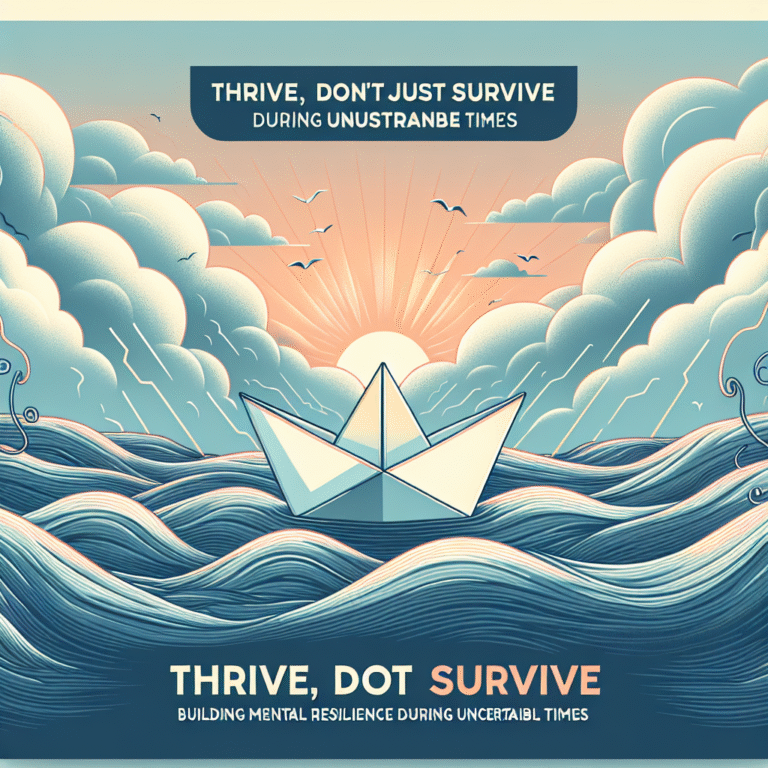
Behavioral Breakthroughs: Insights from Real-Life Case Studies That Will Transform Your Thinking
Introduction: The Power of Behavioral Insights
In a world brimming with data and rapid changes, understanding human behavior has never been more critical. Behavioral breakthroughs reveal profound insights into how we think, act, and adapt. These insights don’t just belong in academic articles; they emerge from real-life situations where individuals and organizations have successfully altered behaviors to create lasting change. The phrase "Behavioral Breakthroughs: Insights from Real-Life Case Studies" captures the essence of this exploration.
Imagine an organization struggling with employee engagement. By simply rethinking their approach to feedback and recognition, they foster a culture of appreciation that dramatically improves morale and productivity. This is just one instance where behavioral insights have reshaped outcomes, illustrating the necessity of applying these strategies across various sectors. This article delves into numerous case studies that showcase transformative behaviors, revealing insights that can inspire individuals and organizations alike.
The Science Behind Behavioral Breakthroughs
Understanding Behavioral Change
Before diving into case studies, it’s crucial to understand the framework behind behavioral change. At its core, behavioral change is influenced by a multitude of factors—including environment, motivation, and social norms. Scholars from behavioral economics, psychology, and sociology have extensively studied these dynamics, contributing to our understanding of how and why people change their behaviors.
- Motivational Drivers: What inspires individuals to take action?
- Environmental Cues: How does context influence decision-making?
- Social Influence: How do peers and societal norms shape our behavior?
In harnessing these elements, we can engineer more effective strategies for driving behavioral breakthroughs.
Case Study Exploration: Real-Life Examples
1. The Powerful Shift: Google’s Project Aristotle
Overview: Google aimed to improve team effectiveness and productivity. They launched Project Aristotle, where they analyzed over 180 teams to determine what made some teams successful over others.
| Key Findings | Description |
|---|---|
| Psychological Safety | Teams with a culture of safety, where members felt comfortable taking risks, performed better. |
| Dependability | Successful teams were characterized by reliability, where team members could count on each other to deliver on commitments. |
| Structure and Clarity | Clarity in roles and expectations led to effective collaboration. |
Relevance: Project Aristotle is a compelling example of how behavioral insights can identify specific variables that contribute to success. Organizations can leverage these findings to create a more supportive environment, thereby driving engagement and performance.
2. Mind Over Matter: The Health Improvement Initiative of Aetna
Overview: Aetna, a health insurance company, initiated a campaign aimed at improving the health of its employees.
- Intervention: They offered financial incentives for healthy behavior, including walking programs and meditation sessions.
- Results: Employees reported increased productivity, improved health metrics, and higher job satisfaction.
| Measure | Before Initiative | After Initiative |
|---|---|---|
| Employee Engagement | 64% | 81% |
| Health Costs | $1,800/year | $1,200/year |
Relevance: Aetna’s approach is a testament to financial incentives combined with behavioral insights that encourage healthier lifestyles. The clear metrics indicate not only improved health but also enhanced workplace culture through the promotion of well-being.
3. The Impact of Storytelling: The Case of Charity: Water
Overview: Charity: Water, a non-profit organization, tapped into the power of storytelling to raise awareness and funds for clean water initiatives around the world.
Strategy: By sharing real-life stories about individuals impacted by water scarcity, they created emotional connections with potential donors.
| Metric | Before Storytelling | After Storytelling |
|---|---|---|
| Donations | $500,000 | $1,200,000 |
Relevance: This case illustrates how narrative can be a potent tool in behavioral change, motivating individuals to act based on emotional resonance rather than just logical persuasion. Organizations can adopt storytelling to create connections and drive engagement.
4. Behavioral Nudges: The Success of UK’s Behavioral Insights Team
Overview: The UK government established a Behavioral Insights Team (also known as the "Nudge Unit") to improve various public policies through behavioral techniques.
Initiatives:
- Simplifying forms to increase tax compliance.
- Sending reminder texts for scheduled medical appointments.
| Initiative | Compliance Rate Before | Compliance Rate After |
|---|---|---|
| Tax Compliance | 80% | 95% |
| Medical Appointments | 75% | 90% |
Relevance: The Nudge Unit effectively demonstrates how small behavioral nudges can lead to significant improvements in public compliance and engagement. It serves as a guide for organizations seeking to implement subtle yet effective strategies in their operations.
5. The Role of Environment: A Case Study on Reducing Plastic Waste
Overview: A community initiative aimed at reducing plastic consumption in a major city employed several strategies targeting behavior changes.
- Use of reusable bags was incentivized through discounts in local stores.
- Public education campaigns raised awareness about plastic waste.
| Behavioral Change | Prior to Initiative | Post Initiative Change |
|---|---|---|
| Use of Reusable Bags | 20% | 60% |
| Plastic Waste Reduction | 3,000 tons/year | 1,800 tons/year |
Relevance: This initiative highlights the impact of environmental factors on behavior. By altering the local context and providing incentives, the community achieved a substantial reduction in plastic waste, demonstrating the power of behavioral breakthroughs.
Key Themes in Behavioral Breakthroughs
Emotional Engagement
The significance of emotional connection emerges repeatedly across the case studies. Whether it’s through storytelling or creating a safe workplace, successful behavioral interventions often hinge on tapping into the emotional core of individuals.
Incremental Change
Behavioral breakthroughs do not always require sweeping reforms. Instead, they can emerge from small, incremental changes—such as improvements in communication, incentives, or environmental cues—that collectively lead to substantial impact.
Focused Measurement
Implementing measurable goals and tracking results are integral to understanding the effectiveness of behavioral strategies. The case studies consistently show that organizations that monitor progress are better positioned to refine approaches and optimize outcomes.
Conclusion: Embracing Behavioral Breakthroughs for Growth
The case studies explored in this article underscore the profound effects that understanding human behavior can have on our personal and organizational lives. Behavioral Breakthroughs: Insights from Real-Life Case Studies provide not just academic theories but practical applications that can be harnessed in diverse contexts.
Whether you’re striving to enhance employee engagement or seeking innovative ways to promote healthier lifestyles, the key takeaways from these studies should inspire action. Take a moment to reflect on how you can apply these insights in your own life or organization. The journey to transformative behavioral change begins with just one small step—what will yours be?
FAQs
1. What are behavioral breakthroughs?
Behavioral breakthroughs refer to significant changes in human behavior that lead to improved outcomes, often informed by insights derived from research and real-world applications.
2. How can organizations implement behavioral insights?
Organizations can start by identifying specific behaviors they wish to change, utilizing insights from behavioral science, and applying strategies such as nudges, incentives, or environmental modifications.
3. Can behavioral change happen overnight?
While some changes may occur quickly, most behavioral changes are gradual and require consistent reinforcement and support.
4. What role does emotional engagement play in behavioral change?
Emotional engagement is crucial; people are more likely to change their behavior when they feel a personal connection to the cause or initiative.
5. How do I measure the success of a behavioral intervention?
Success can be measured through specific metrics related to the desired outcome, such as engagement rates, compliance statistics, or overall performance improvements, collected before and after implementing changes.
By leveraging the insights from "Behavioral Breakthroughs: Insights from Real-Life Case Studies", we can illuminate the pathways to meaningful change and foster environments that empower individuals to thrive. Discover your breakthrough today!

















